Six best of breed examples of personalisation going around
*This article is kindly contributed by StudioSpace agency, Arktik Fox.
In the 2024 Digital, Marketing & eComm in Focus study, it was identified that personalisation is still high on the agenda for many brands. But maturity in capability is not there to execute on ambitions creating a big gap between the leaders in the personalisation space and the laggards. In this article, we explore some of the best of breed thinking around personalisation in the local and global market and what brands can learn from it.
Personalising the moments that matter to drive ease and convenience - Woolworths
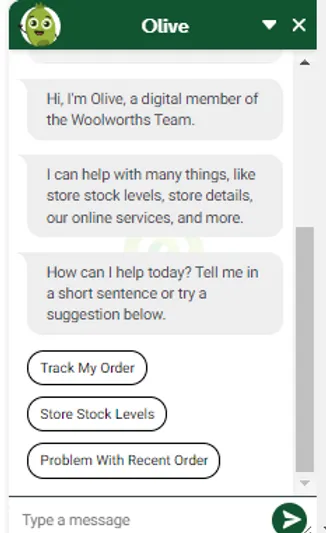
Woolworths is one brand that is a local leader in the personalisation space.
What is obvious in their approach, is that the brand understands the moments that matter in the experience where personalisation plays a vital role in enhancing the overall experience and delivering an unrivalled level of convenience to the customer/shopper.
Whilst there are many examples of how they have executed personalisation well across the customer and shopper journey, we want to zero in on one of them, being how their chatbot Olive plays a role in effectively serving customer service enquiries in a highly personalised manner. Cute name aside, Olive is one of the most clever chatbots going around. If a user has a delivery arriving and turns to Olive within hours of that delivery, Olive proactively seeks to support pre-empting that your enquiry will be about that upcoming delivery. Got a problem with an order? Olive will allow a user to quickly submit a refund request by serving up a shoppers recent orders so they can select the product that didn’t arrive or that is out of date for a full refund.
Key takeaways
-
Think about the moments that matter, personalisation for personalisation sake deliver little value to the customer or the brand | business.
-
Consider what role personalisation should play in that moment that matters – does it help the customer in their journey, through ease, convenience and choice or does it recognise me and reward me for my engagement or behaviour. In the Woolworths example, Olive is playing critical role in helping me through my journey, making things quicker and easier.
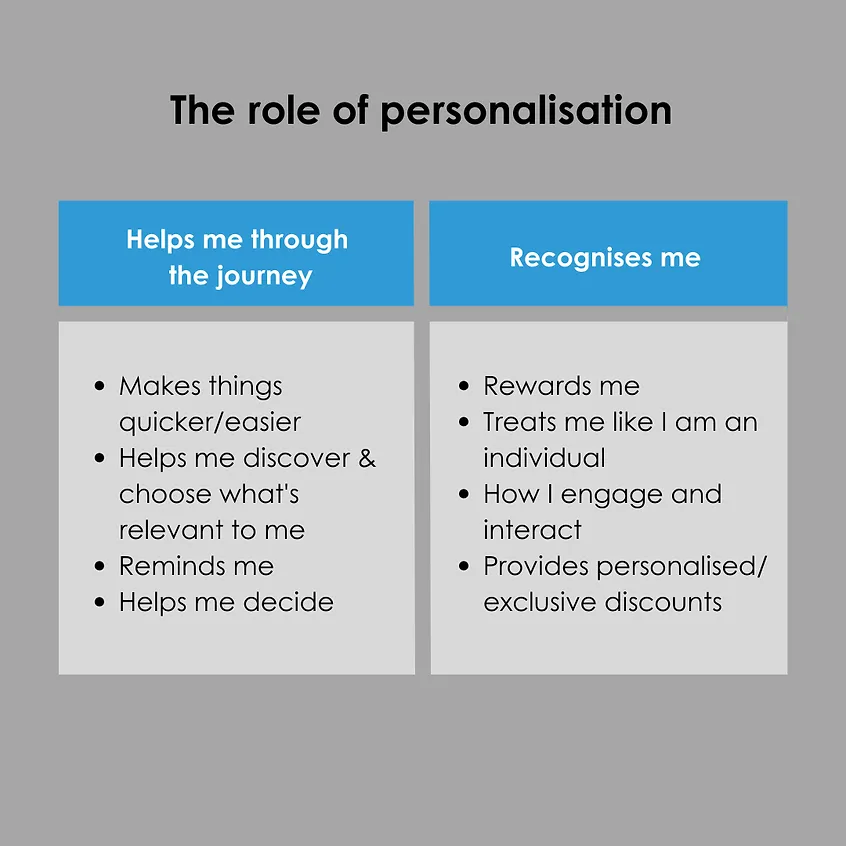
Personalisation going well beyond marketing & communications - Vitable
One of the best personalised product offerings we have seen going around is Vitable.
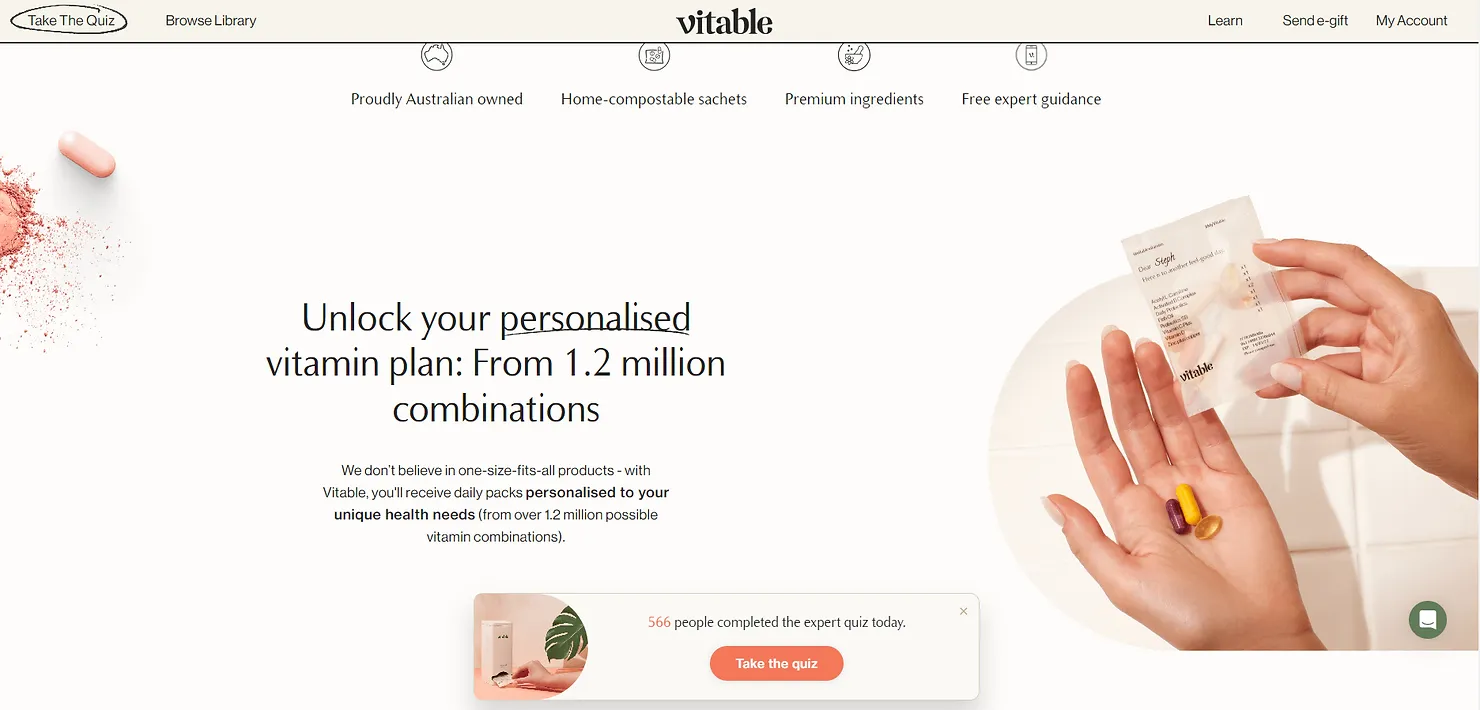
A personalised vitamins brand, Vitable allows their prospective customers to take a quiz to determine what vitamins they need to nourish their body & improve health outcomes and then the shopper receives their own personalised vitamin pack. Vitamin sachets are delivered to customers homes via their subscription service, to allow them to take their daily vitamins which are personalised to their individual needs. No more needing to buy a host of different vitamins in different containers and sorting them into a tablet container. Vitable is said to have 1.2 million different vitamin combinations to suit individuals needs.
Key takeaways
-
Often personalisation can be thought about through a marketing & communications lens and at a channel level. What is great about the Vitable example is personalisation is core to the product offering, providing consumers with an all-in-one solution based on their needs.
-
Vitable’s use of a quiz helps the brand learn about their customers needs intimately that supports them to target an engage with the customer in a personalised way ongoing through the lifecycle.
-
Like we have seen in the Woolies example, Vitable has really thought about the role that personalisation plays to deliver value to the customer. The pain point of having to buy a series of vitamins, sort them into a container for daily use is time consuming and costly and often there is no wrap around service that helps a customer decide what they need in the first place. Personalisation is delivering a solution to a problem, which again is delivering value through ease and convenience as well as taking the guess work out of the decision-making process enabling easy decision making.
Real time personalisation - Domino’s
The pizza game is a competitive one, with large franchised players and small individual operators. As food delivery platforms like Uber, DoorDash and others have re-set customers expectations in the experience delivery process, brands have had to up their game in the food delivery stakes. Domino’s has over many years, invested heavily into digital and technology to deliver on their promise of fresh pizza fast and like Woolies they have understood the pain points of the customer and even their operators and innovated on the personalisation front with a focus on delivery. A recent research study by Team Global Express has in fact reinforced the heightened importance of transparency around the delivery process with Australians wanting and expecting the ability to track their delivery in real time.

The Domino’s pizza tracker is designed to do just that, allowing its customers to gain up to the minute updates from when their pizza has been put into the oven, to when it is ready instore for pick up or leaving the store for delivery.
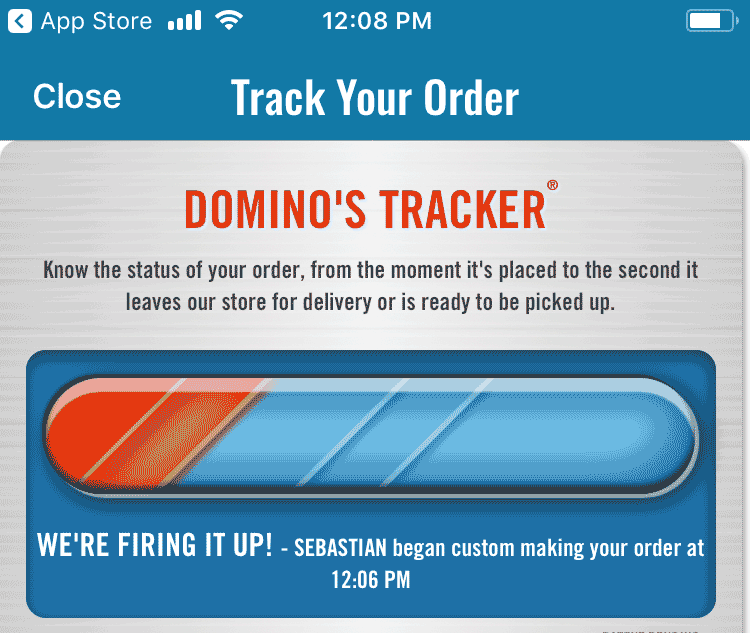
Key takeaways
- Personalisation can not only serve different user needs, innovation in the personalisation space like the Domino’s example can support and reinforce the brands value proposition. Domino’s has continued to innovate around its core value proposition of fast and fresh and this example of up to the minute personalisation helps to reinforce that from order to delivery, Domino’s is delivering on that commitment, whilst also providing the customer with an unrivalled level of transparency vs their competitors.
Going beyond an offer – Essendon Football Club
It’s all too common in this day and age for brands to use a customer’s birthday to offer a discount or voucher to put towards a purchase at their store or online. But what footy clubs do so well is know that the players are a key part of the member experience and what their smallest members want on their birthday isn’t a voucher, but to hear from one of their favourite players wishing them a happy birthday. A few years ago, my son received his personalised birthday video message from the club, from none other than the captain. The shock, surprise and excitement of a player saying his name and wishing him a happy birthday bought far more joy than a voucher or a discount would ever provide a young sports fan.
Key takeaways
- Whilst the concept is a simple one and is a more basic version of personalisation, innovation around milestones and events can leave a lasting impression when done so in a way that celebrates and recognises the individual as opposed to it being used as a mechanism for commercial gain. The mileage a brand gains from a thoughtful, personalised engagement can engender far more loyalty than simply driving a short-term transaction.
Personalisation isn’t always about data – Walmart
The term personalisation is synonymous with data, but not all personalised experiences need to delivered through the collection of data. Brands like Walmart have leveraged AI within their apps and instore to allow shoppers to individually determine which product is right for them.
For Walmart, the virtual makeup try-on experience, which is delivered through their app, is another way Walmart said it is creating personalised shopping experiences for its customers. Through the app, customers can try on more than 1,400 products from Walmart’s brand assortment including Covergirl, E.l.f. Cosmetics, Maybelline and Revlon. To build trust, the technology which is powered by AR does not store customer data.
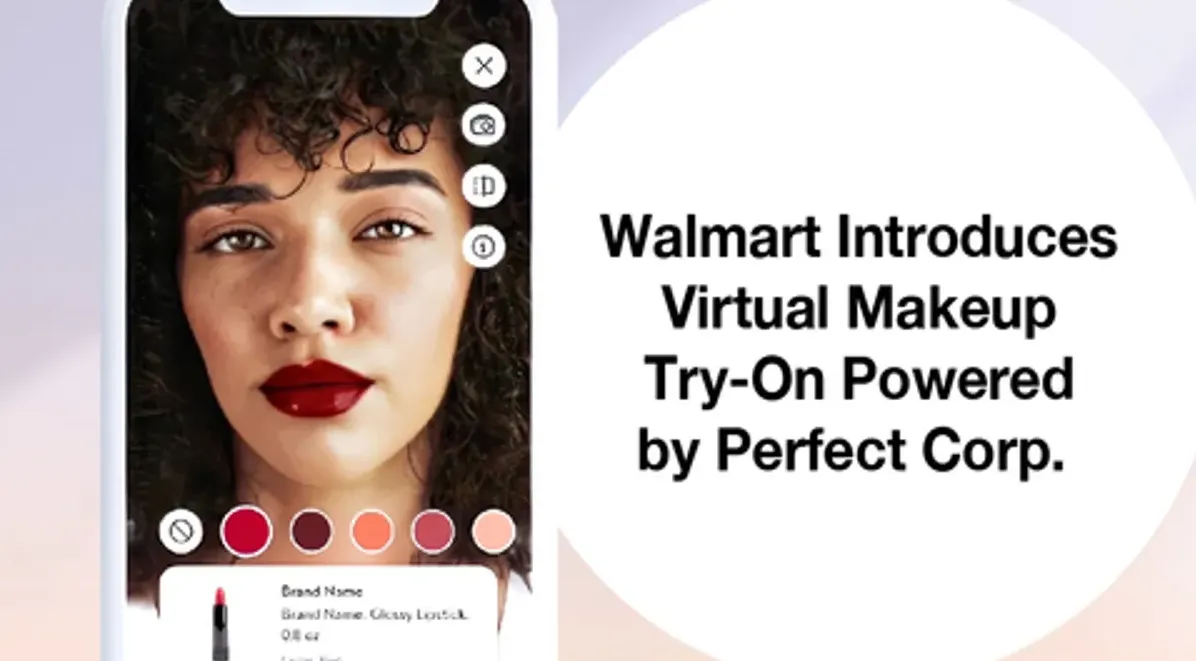
Key takeaways
-
In a world where customers are increasingly concerned about their data, thinking about how technology can power personalised experience delivery, without the need to capture data is powerful.
-
As we see with the Walmart range, where consumers are faced with a broad range of products to choose from, choice isn’t necessarily a good thing, and what is good for one customer is not necessarily good for another when it comes to what looks good on an individual. In this example, Walmart has thought about the role of personalisation to simplify choice, as a big box retailer they don’t have specialists on the floor or online to support decision making, so personalisation is doing some of the heavy lifting for the brand and empowering shoppers with the tools to choose.
Our Digital, Marketing & eComm in Focus study has shown that B2B brands are less likely to be prioritising personalisation even though 73% of B2B buyers expect personalisation in the experience. As B2B buyer expectations are shaped by their B2C interactions and the workforce increasingly shifts to gen Y & Z, personalisation is paramount to deliver great user experiences and demonstrate value. For subscription based B2B offerings, demonstration of value is critical to keep customers sticky with the offering.
ProWritingAid uses a weekly email to keep its users informed of the value they are deriving from their platform/subscription use that is truly based on their individual behaviour.
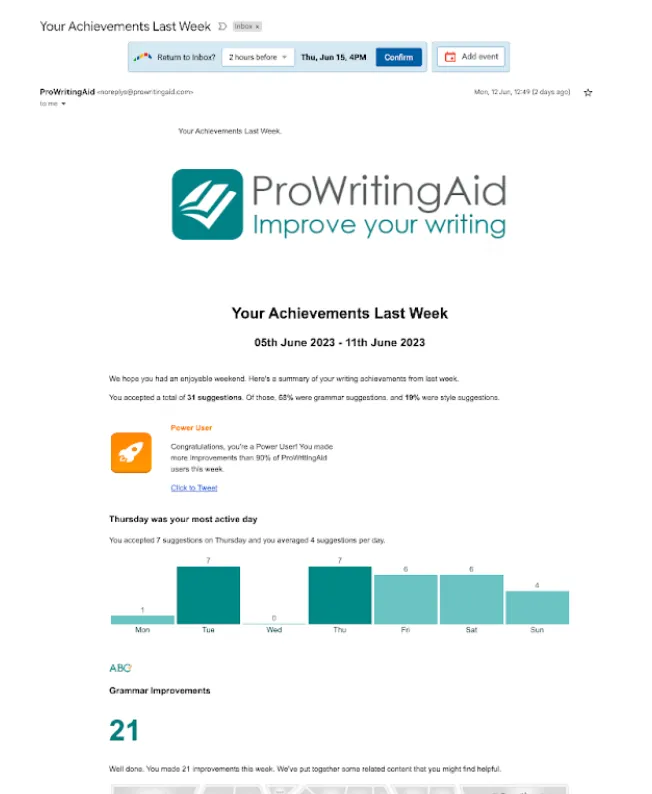
Key takeaways
-
In the B2B subscription space, driving frequency of usage is paramount, providing transparency with personalised performance can be used to motivate and inspire additional use as well as reinforce how much value a user is gaining from their subscription.
-
Whilst this data might be available within the core digital experience (e.g an online account) bringing the data to the user through channels like email can make it more accessible.